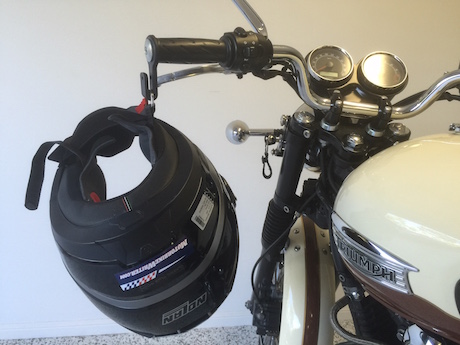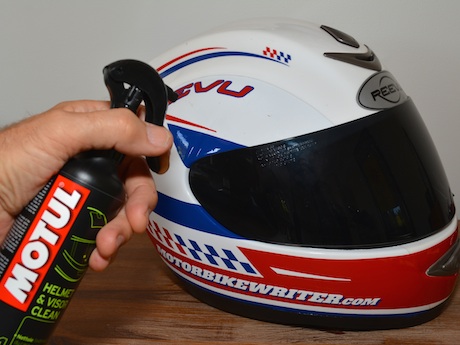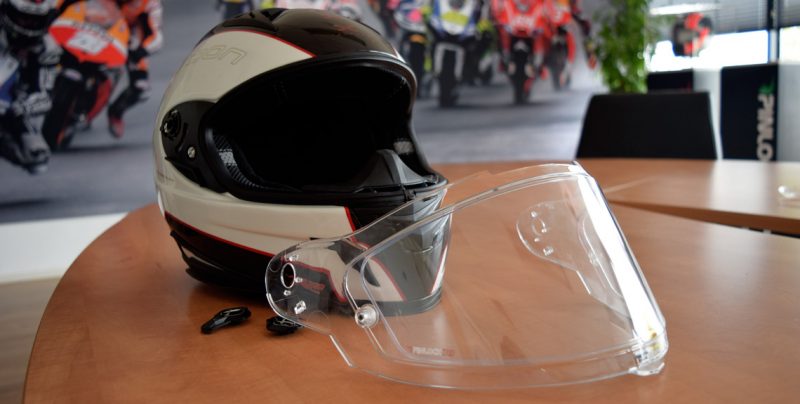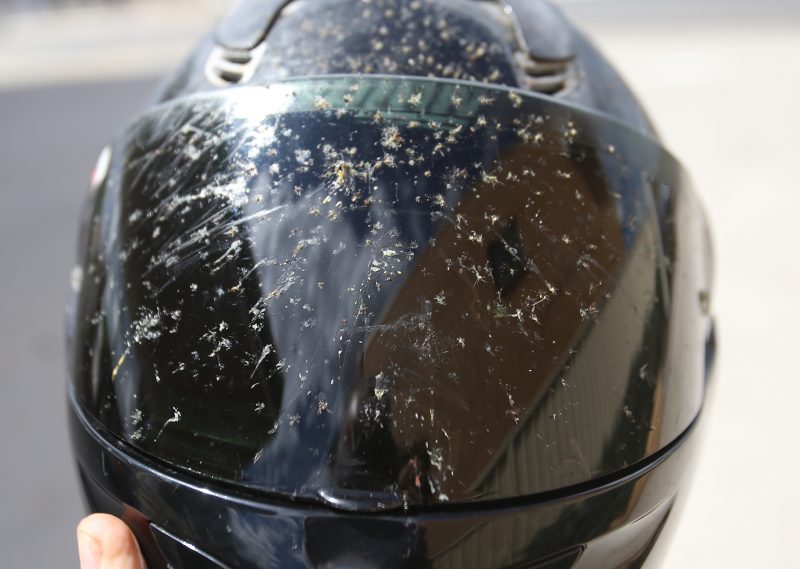Your visor is your window to what lies ahead so it is important to protect it and keep it clean for your own safety.
It also advisable to look after your visors because they can be expensive to replace. Read about the “great visor ripoff” here.
Protecting your visor
You can lengthen the life of your visor if you take good care of it.
When riding, don’t follow other riders or motorists too closely as that will put you in the firing range for stones and other detritus.
In dusty conditions, don’t ride with the visor up as it will get dust on the inside and that can ruin the anti-fog coating.
When you stop for a coffee or to fill up, place your helmet somewhere safe so that it doesn’t fall and scratch the visor.
Placing it on your bike seat, handlebars or mirrors is not always the safest place.

If you take it with you to a cafe, be careful that other people don’t shove their grimy hands all over the visor.
While riders would never touch someone else’s helmet, I find non-riders tend to pick them up to admire them – especially if they have bright coloured graphics – and smear the visor with their greasy chip-eating fingers.
It’s worse if they stick their fingers on the inside of a visor with an anti-fog coating.
When you are not riding, store the helmet in the soft felt bag it came in.
Otherwise, place the helmet on a shelf in a cool, dry place out of direct sunlight with the visor facing away from where people might stick their hands.
How to clean your visor
If you hit a bug, never wipe it off with your gloved finger. That can smear the visor or, worse, scratch it.
In fact, never dry-wipe a visor, no matter how soft the material you use.
Always use a special visor cleaner, window cleaner or plain water.
Avoid using sprays that have any oil in them as that can leave a smeary film on the visor. It can create a flare or “starring” effect when looking toward a street light, approaching headlights or the sun.
However, eucalyptus oil is an exception because it evaporates and doesn’t leave a smear. it also makes the inside of your helmet smell nice.
Specialist motorcycle visor sprays usually cost more than household window cleaner, yet are no more effective.

The best cleaners are alcohol based as it evaporates and does not leave behind a smear.
Get a small spray dispenser and decant some cleaner into it so you can carry it in your jacket pocket together with a non-abrasive cloth.
Microfibre cloth is best. Make sure your cloth never falls on the ground where it can pick up grains of sand or dirt. These will scratch the visor the next time you wipe it. Wash the cloth regularly.
If there are dried-on bugs on your visor, you should allow the cleaner to sit for a while before wiping it with a rag. This will soften the bug and make it easier to remove.
You can also remove the visor and soak it in warm, soapy water. Rinse it off with clear water and allow it to drip dry. You can then remove any water marks with window cleaner and a soft tissue.
If you’re out on the road and you’ve forgotten your visor spray and soft cloth, you can make do with toilet paper and water from a public toilet.
Wet a few pieces of toilet paper and place them over the visor. Leave them there for at least 10 seconds, then gently wipe the visor clean.
Use dry toilet paper to remove the watermarks.
Don’t use the abrasive paper hand towels supplied in public toilets or at service stations.
One of the best ways to permanently protect your visor is by applying a ceramic coating. They are much more widely available now and not expensive to have them professionally applied. Many manufacturers also offer an easy-to-use DIY kit.
The best kit we tried comes from AvalonKing. Their Armor Shield IX ceramic coating DIY kit has everything you need to do the job yourself. Not only will you protect your helmet visor and make it much much easier to clean, but one kit is enough to coat the whole motorcycle.
Click here to check out the best DIY Ceramic Coating kit.
Anti-fog inserts

If your visor has an anti-fog coating on the inside, be extra careful. Don’t apply alcohol-based cleaners as this can remove the coating.
Use water and a tissue or soft cloth. Pinlock actually suggest you remove it and clean it regularly as it will “optimise the fog resistant properties in the insert lens to absorb moisture better“.
Some anti-fog inserts that have a gummy surface should never be removed or touched at all!
Read the cleaning instructions that come with the anti-fog insert.


